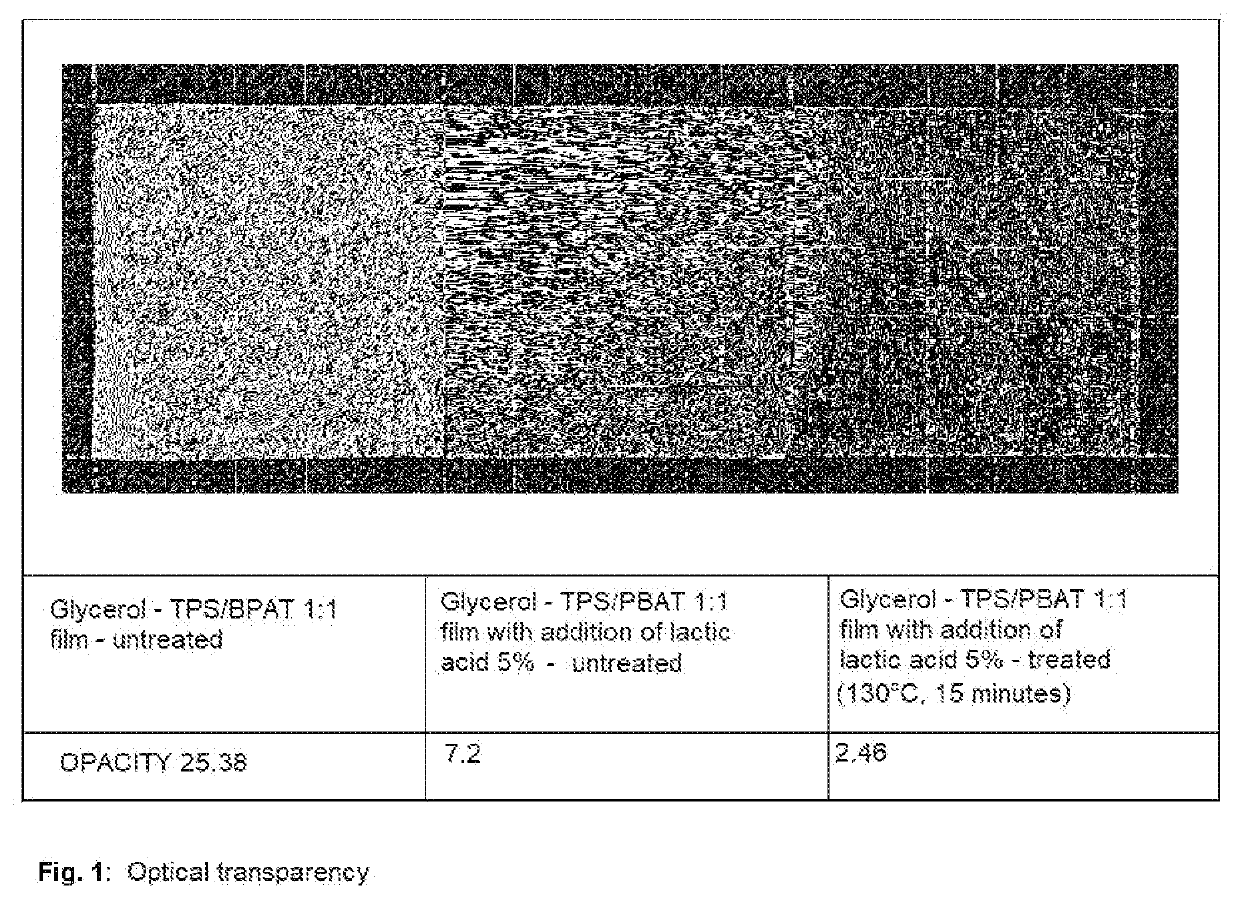Compound or film containing thermoplastic starch and a thermoplastic polymer
a technology of thermoplastic star which is applied in the field of thermoplastic starch compound or film containing thermoplastic starch and thermoplastic polymer, can solve the problems of glass transition temperature to drop below the degradation temperature, tps already known, and irreversibly strong swelling
- Summary
- Abstract
- Description
- Claims
- Application Information
AI Technical Summary
Benefits of technology
Problems solved by technology
Method used
Image
Examples
Embodiment Construction
[0058]In the following tests, maize starch was introduced into an extruder as the starting raw material by means of solid dosing. Stearic acid is used (1% by weight) to improve the processability (reduction in torque). The mixture is processed in a twin-screw extruder using a temperature profile in the range 100-130° C. and at a speed of 250 rpm and granulated at the die plate by means of a hot die. The resulting material is water-soluble and can be incorporated as finely distributed TPS (disperse phase) into polyester melts for example (continuous phase) via a separate extrusion step. The thermoplastic starch is compounded together with polybutylene adipate terephthalate (PBAT) as polyester in a ratio of 1:1 in a twin-screw extruder.
[0059]Suppliers:
[0060]Sorbitol, glycerol, stearic acid—Brenntag, AT
[0061]DL-lactic acid—Sigma Aldrich
[0062]PBAT—BASF
[0063]ESBO—Hobum, AT
[0064]Citric acid—Jungbunzlauer, AT
[0065]Machine Types:
[0066]Extrusion (TPS and compound): Theysson TSK 30, 28D, 7 zo...
PUM
| Property | Measurement | Unit |
|---|---|---|
| Temperature | aaaaa | aaaaa |
| Temperature | aaaaa | aaaaa |
| Percent by mass | aaaaa | aaaaa |
Abstract
Description
Claims
Application Information
 Login to View More
Login to View More - Generate Ideas
- Intellectual Property
- Life Sciences
- Materials
- Tech Scout
- Unparalleled Data Quality
- Higher Quality Content
- 60% Fewer Hallucinations
Browse by: Latest US Patents, China's latest patents, Technical Efficacy Thesaurus, Application Domain, Technology Topic, Popular Technical Reports.
© 2025 PatSnap. All rights reserved.Legal|Privacy policy|Modern Slavery Act Transparency Statement|Sitemap|About US| Contact US: help@patsnap.com

